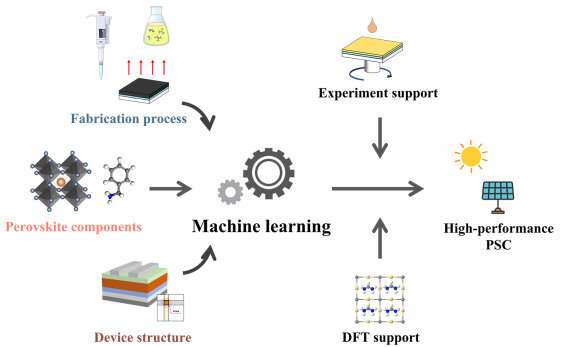Metal halide perovskite solar cells (PSCs) have been rapidly developed in the past decade. To obtain high-performance PSCs, it is imperative to optimize the fabrication processes and the composition of the perovskite films. Extensive work has been carried out to determine the effects of the fabrication processes and composition of the perovskite films on the device performance.
However, it has been challenging to elucidate their correlations because of the enormous variable space constructed by these factors. Exploring these relations is undoubtedly critical to predict the device performance for efficient device optimization. However, owing to the complexity of these factors, it has been impossible thus far to carry out this work solely through experimentation.
Recently, Professor Zheng Xu and Associate Professor Dandan Song of Beijing Jiaotong University adopted the machine learning (ML) approach to explore these correlations by learning the existing experimental results, thereby enabling the prediction of the device performance from these factors.
The effects of these factors on the device performance were analyzed by shapley additive explanations (SHAP) analysis. Furthermore, to improve the interpretability of the ML model, the authors considered A-site cations as an example to explain and verify the predicted results by density functional theory (DFT) calculations and experiments. This work thoroughly elucidates how ML guides device optimization, thereby also serving as a guide for the reverse design of experiments to obtain high-performance PSCs.
This research was published in the Journal of Energy Chemistry.

